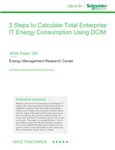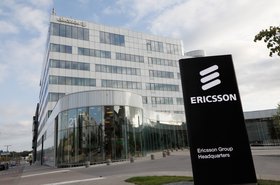Sustainability is top of mind for companies across every industry, especially energy-intensive sectors like ours. Seemingly small design and operational decisions can make a large impact on energy used in our data centers and the overall sustainability of the sector. As we consider options that would allow data centers to meet sustainability goals, a discussion is underway regarding temperatures specified in service-level agreements (SLA).
The American Society of Heating, Refrigerating and Air-Conditioning Engineers (ASHRAE), Thermal Guidelines for Data Processing Environments recommends data center operating temperatures between 18° to 27°C (64° to 81°F) most of the time.
However, the thermal guidelines have a much broader Allowable Range within which IT equipment may operate for extended periods with no material detrimental effects. Unfortunately, many customer-proposed SLAs (and internal operating guidelines) effectively disallow any excursions outside the Recommended Range. While this is not the intent of the thermal guidelines, it is a natural result from the complexity of ASHRAE’s guidance around consequences and timing of excursions into the Allowable Range. As a result, designers and operators specify temperatures much lower than what is required for the IT equipment. In the case of colocation companies, customers may attach significant financial penalties for any violation, providing a strong disincentive to efficient design and operations. Providers design and operate within these constraints, resulting in wasted electricity and water, excessive equipment and emissions.
To address this, we must facilitate a greater understanding of how supply temperatures affect servers, especially among members of the industry—like procurement professionals, brokers, and IT professionals—who aren’t mechanical engineers.
If there is more tolerance for extended excursions into the Allowable Range, operators can increase supply air temperature set points when appropriate, reducing facility energy and water use (in cases where evaporative cooling is used).
Even small changes in temperature and humidity controls could significantly impact data center energy consumption. A better understanding of the standards, resulting in wider SLA ranges will forge significant progress toward a more sustainable future. I firmly believe that this will save energy, save water and, if done properly, increase server reliability.
Common industry practice today is to target a static cold aisle temperature set point year-round. With many climates and economizer systems, one could safely reset the set point lower in colder temperatures without increasing energy or water use. This would increase IT equipment reliability and likely reduce IT equipment energy.
Measuring the energy saved through a plan like this is complex. As temperatures rise, servers use more energy as their fan speeds increase, offsetting the facility’s energy savings. However, if done well, there will likely be an overall energy savings. For facilities that use partial evaporative cooling (like our IDEC systems), there will also be a reduction in water consumption.
My plan for implementing that broader range in existing facilities would involve increasing set points from 74°F to 79°F to extend economizer operations. We would still operate in the ASHRAE Recommended Range, but we wouldn’t be so conservative, as we would have more time to recover from an excursion into the Allowable Range. Some may note that 79°F is within the Recommended Range and allowable under most SLAs. However, no reasonable person would continuously operate at 79°F if a brief excursion beyond 80.6°F results in significant financial penalties.
Additionally, we would drop set points from 74°F to lower temperatures (as low as 64°F), when doing so doesn’t require evaporative or mechanical cooling. We would make these changes incrementally and cautiously, focusing on server reliability.
Alongside those measures, in new facilities that had adopted wider SLA ranges, we would specify equipment for higher discharge temperatures. This design revision would create efficiencies throughout the system, even lowering embodied carbon.
Hyperscalers already achieve markedly lower PUEs by implementing these tactics in data centers they design or operate directly. Their practices should serve as an example to data centers everywhere, even as they may be too aggressive for operators with less control over the IT equipment.
Talking about these changes is the first step, but only taking action will move us toward a more sustainable future. We are actively working with a customer to test these set point changes. The customer occupies multiple data halls with similar equipment. We will continue to operate half of the data halls at the static set point while operating the other half with variable set points. We plan to study energy reduction, water use and, with the customers’ cooperation, server reliability for each side.
Through broadening SLA ranges, I believe we can reduce energy consumption with a reasonably conservative approach. Even with liquid-cooling on the rise, air-cooled servers will remain for the foreseeable future. Optimizing operations for such servers is important to help guide our industry into a more sustainable future.





